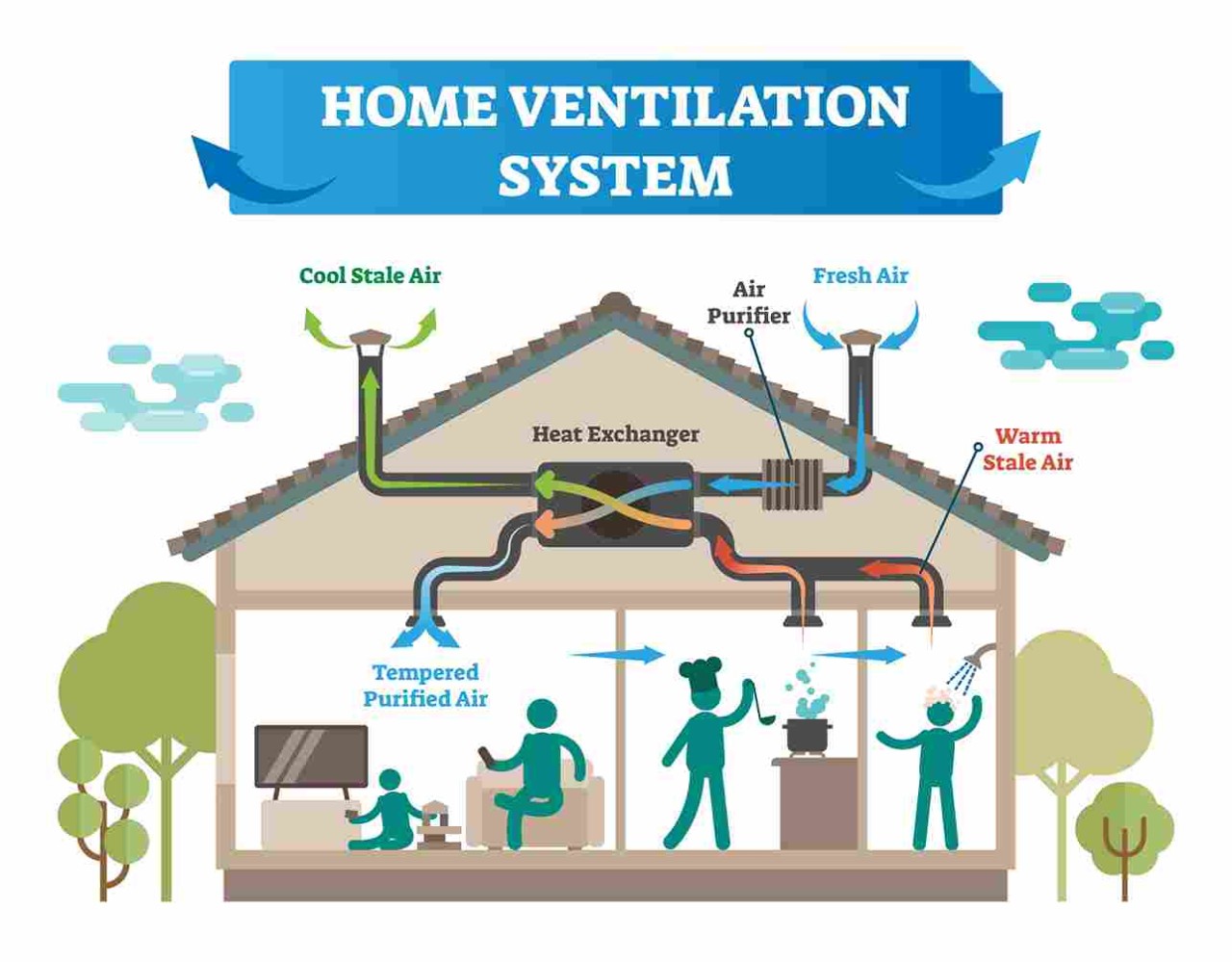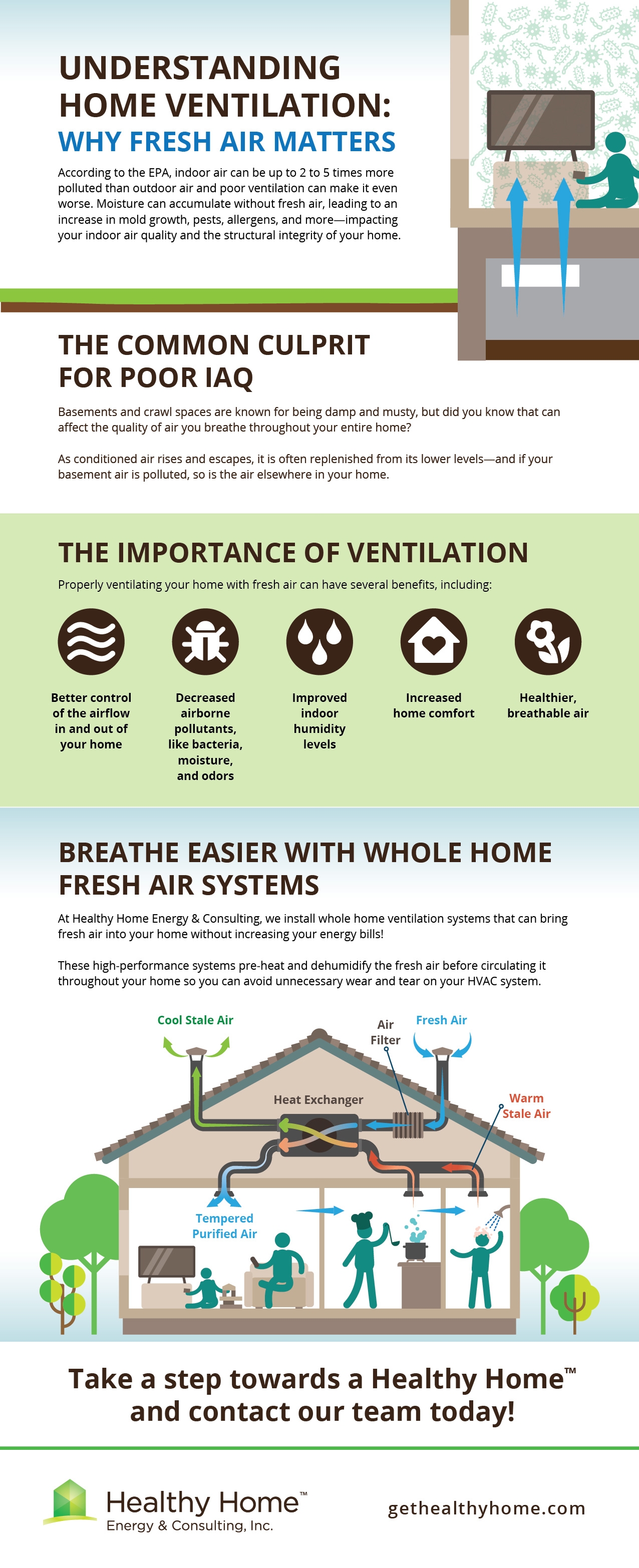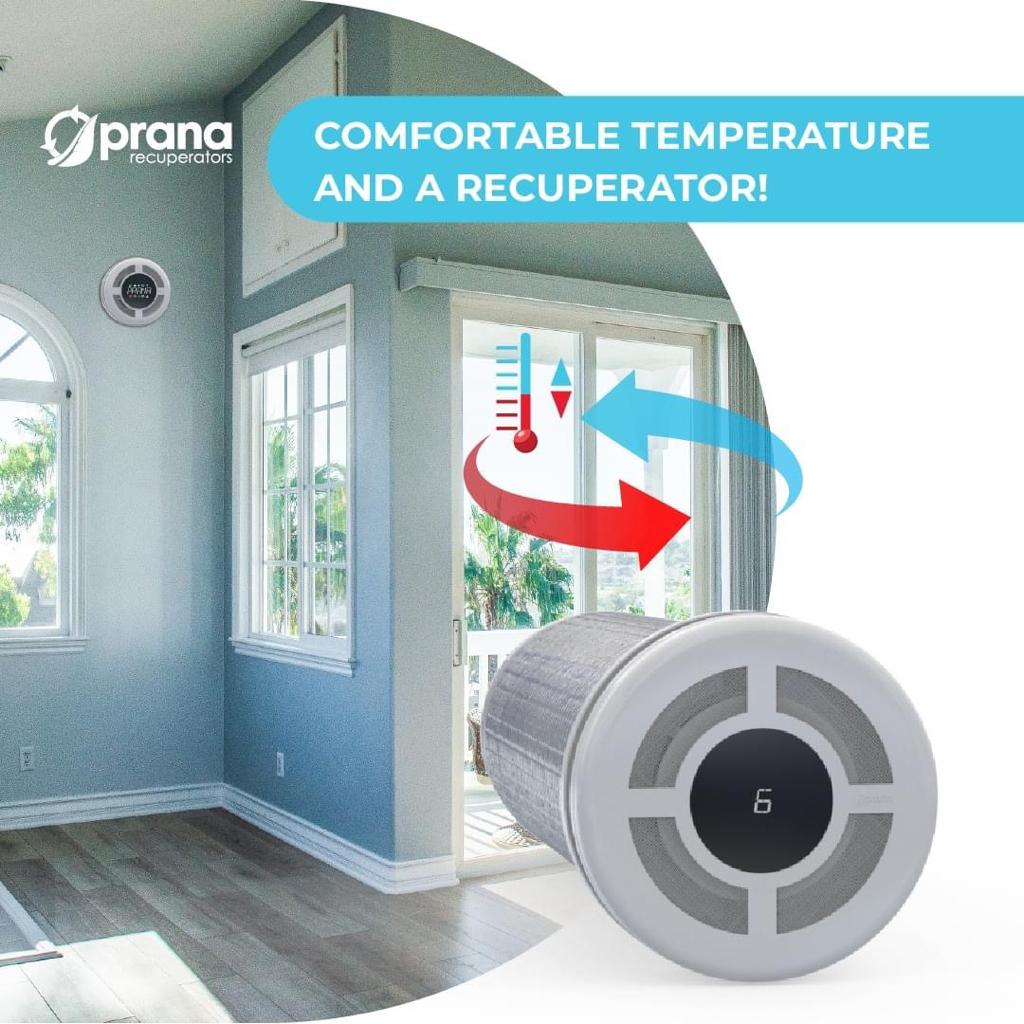Recognizing the Relevance of Home Air Flow for a Healthier Living Setting
Home air flow plays an important role in preserving a healthy and balanced living atmosphere. It facilitates the exchange of outside and interior air, which is essential for boosting air high quality. Without correct air flow, homes can become reproducing premises for irritants and contaminants. The repercussions of insufficient air blood circulation can be substantial. This brings up the questions of exactly how homeowners can efficiently implement air flow approaches to secure their health and wellness and well-being. Comprehending these approaches is important.

The Basics of Home Ventilation
Home ventilation acts as a crucial component of indoor air high quality and convenience. It involves the process of exchanging stale interior air with fresh outside air, thereby reducing moisture and regulating temperature. Correct ventilation systems can include all-natural methods, such as open windows and vents, along with mechanical systems, such as exhaust followers and air exchangers. Effective home ventilation helps protect against concerns like interior mold development and the buildup of dangerous bits. It also boosts general energy effectiveness, as well-ventilated areas can preserve comfy temperatures with much less reliance on heating and cooling down systems. Understanding the fundamentals of home air flow is important for property owners looking for to create a healthier living atmosphere for themselves and their family members.

Usual Sources of Indoor Air Pollution

Several might not realize it, indoor air contamination can originate from numerous sources within a home. Common contributors include unstable organic compounds (VOCs) sent out from paints, solvents, and cleaning items. Family devices, such as gas cooktops and fireplaces, can launch harmful gases like carbon monoxide gas and nitrogen dioxide. Additionally, mold and mildew and mildew prosper in damp locations, launching spores that influence air quality. Family pet dander, allergen, and pollen can accumulate inside, additional worsening pollution degrees. Cigarette smoking indoors generates harmful chemicals that stick around airborne. Building materials, consisting of asbestos and formaldehyde, can off-gas harmful materials. Identifying these sources is important for maintaining a healthier interior environment and promoting efficient ventilation techniques.
Wellness Results of Poor Air Flow
Interior air contamination can have substantial health implications, specifically when ventilation is inadequate. Poor ventilation can result in the buildup of damaging contaminants, such as unstable organic substances, mold, and particulate matter. This buildup may cause respiratory system concerns, including asthma, allergies, and chronic obstructive lung illness. People might experience symptoms like frustrations, fatigue, and irritability of the eyes, nose, and throat. Vulnerable populaces, such as kids and the elderly, go to greater danger for severe wellness effects. Lasting direct exposure to inadequately ventilated settings can also add to a lot more severe conditions, consisting of heart diseases. Making certain proper air flow is crucial for maintaining a healthy and balanced living environment and reducing the risk of health and wellness difficulties associated with interior air contamination.
Effective Air Flow Strategies for Your Home
Appropriate air flow is crucial for preserving a healthy indoor setting, and executing efficient strategies can considerably improve air quality. Home owners can begin by making certain that exhaust followers are mounted in shower rooms and kitchens to eliminate excess wetness and odors. Opening windows frequently permits fresh air to flow, particularly during moderate weather. Furthermore, using air purifiers with HEPA filters can assist record airborne contaminants. For homes with heating and cooling down systems, preserving cooling and heating systems and altering filters on a regular basis is important for peak efficiency. Integrating natural air flow methods, such as cross-ventilation, can also boost airflow. Finally, sealing any kind of leakages in doors and home windows prevents undesirable drafts, which can interfere with regulated air flow, ultimately bring about enhanced interior air high quality and convenience.
Maintaining Ideal Air High Quality Year-Round
To keep ideal air high quality year-round, property owners need to embrace an aggressive approach to managing their interior setting. Regularly keeping an eye on indoor air top quality is critical; this includes monitoring for toxins such as dust, mold, and unpredictable natural substances (VOCs) Implementing reliable air flow systems, such as exhaust fans and air cleansers, can greatly reduce air-borne impurities. Furthermore, regular maintenance of HVAC systems guarantees peak performance and air blood circulation. House owners Find Out More need to additionally take into consideration humidity degrees, as too much dampness can cause mold and mildew growth. Seasonal modifications might demand changes in ventilation approaches to accommodate varying outside air top quality. By focusing on these practices, homeowners can develop a much healthier space, advertising total health for all occupants throughout the year.
Frequently Asked Inquiries
Exactly How Can I Tell if My Home Requirements Better Air Flow?
To determine if a home calls for far better ventilation, one should observe signs such as relentless moisture, mold growth, musty odors, condensation on windows, or raised allergic reaction signs, indicating inadequate air flow and potentially inadequate interior air high quality.
What Are the Indicators of Poor Indoor Air Top Quality?

Can Houseplants Improve Indoor Air Top Quality Successfully?
The performance of houseplants in improving indoor air high quality is debated. While some research studies recommend they can take in toxic substances and generate oxygen, their overall effect may be very little compared to proper ventilation and air filtering systems.
How Often Should I Change My Air Filters?
The frequency of air filter adjustments usually relies on use and filter kind. Normally, it is suggested to change filters every 3 months, though families with pets or allergies might need even more frequent modifications for perfect performance.
Are There Any Type Of Details Ventilation Equipments for Allergy Sufferers?
Numerous ventilation systems, such as HEPA-filtered systems, successfully lower allergens in the air. Home Ventilation Melbourne. These systems catch pollen, family pet, and dust dander, providing allergy victims with a cleaner, healthier indoor atmosphere click here for more info while handling air high quality effectively
It helps with the exchange of exterior and indoor air, which is essential for improving air high quality. Home air flow offers as an important element of indoor air top quality and comfort. It includes the process of exchanging stagnant interior air with fresh outside air, therefore lowering moisture and controlling temperature. Interior air contamination can have significant wellness implications, specifically when ventilation is poor. Appropriate ventilation is important for maintaining a healthy indoor environment, and applying reliable strategies can greatly improve air top quality.